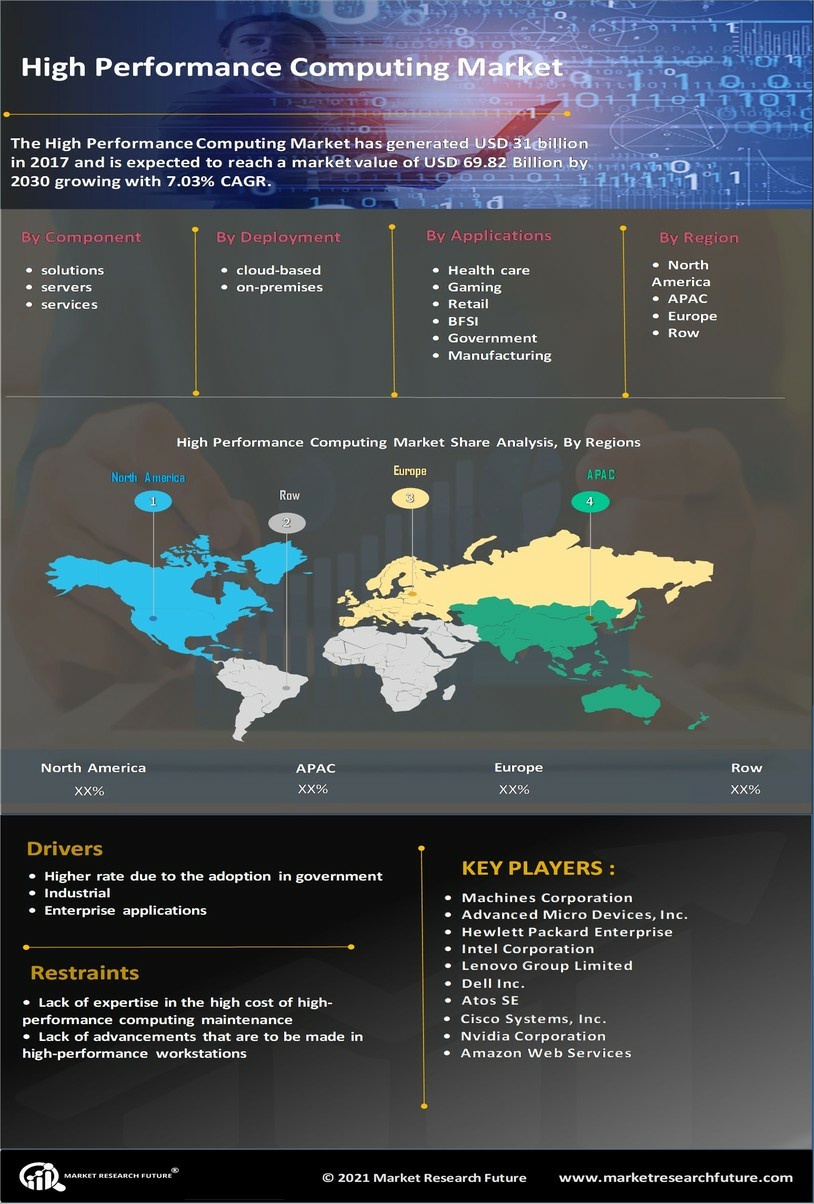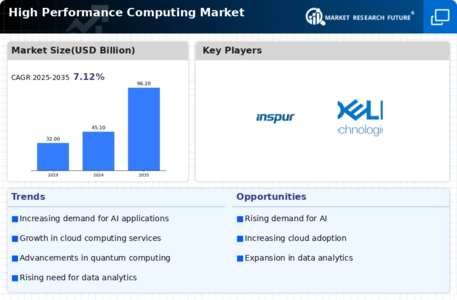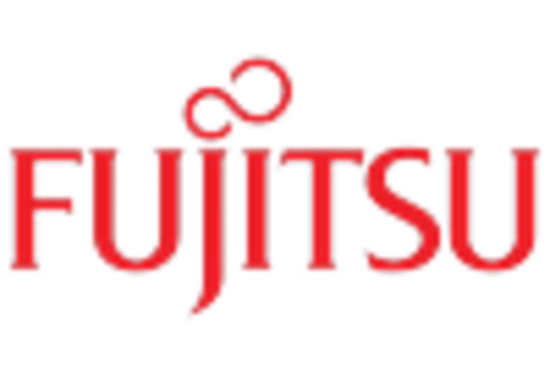Emergence of Edge Computing
The emergence of edge computing is reshaping the landscape of the High Performance Computing Market. As more devices become interconnected through the Internet of Things (IoT), the need for processing data closer to the source is becoming essential. Edge computing allows for reduced latency and improved response times, which are crucial for applications such as smart cities, industrial automation, and healthcare monitoring. This shift is expected to drive demand for high-performance computing solutions that can operate efficiently at the edge. Analysts predict that the edge computing market will grow significantly, potentially reaching USD 15 billion by 2025, thereby creating new opportunities for the High Performance Computing Market to innovate and expand.
Rising Demand for Data Analytics
The High Performance Computing Market is experiencing a notable surge in demand for data analytics capabilities. Organizations across various sectors are increasingly relying on data-driven insights to enhance decision-making processes. This trend is particularly evident in industries such as finance, healthcare, and manufacturing, where the ability to process vast amounts of data quickly is paramount. According to recent estimates, the data analytics market is projected to reach USD 274 billion by 2025, which in turn drives the need for high-performance computing solutions. As businesses seek to leverage big data, the demand for advanced computing resources that can handle complex algorithms and large datasets is likely to grow, thereby propelling the High Performance Computing Market forward.
Advancements in Hardware Technology
Technological advancements in hardware are significantly influencing the High Performance Computing Market. Innovations in processors, memory, and storage solutions are enabling the development of more powerful and efficient computing systems. For instance, the introduction of GPUs and specialized processors designed for parallel processing has enhanced computational capabilities, allowing for faster data processing and analysis. The market for high-performance hardware is expected to witness substantial growth, with projections indicating a compound annual growth rate of over 7% through 2025. This evolution in hardware technology not only improves performance but also reduces energy consumption, making high-performance computing more accessible and sustainable for various applications.
Growing Need for Real-Time Processing
The necessity for real-time processing is becoming increasingly prominent within the High Performance Computing Market. As industries such as finance, telecommunications, and autonomous vehicles demand instantaneous data processing, the capabilities of high-performance computing systems are being put to the test. The ability to analyze and respond to data in real-time can provide a competitive advantage, particularly in sectors where timing is critical. This trend is expected to drive the adoption of high-performance computing solutions that can support low-latency processing and high throughput. As a result, the market is likely to expand as organizations seek to implement systems that can meet these stringent requirements.
Increased Investment in Research and Development
Investment in research and development is a critical driver of the High Performance Computing Market. Governments and private organizations are allocating substantial resources to enhance computational capabilities for scientific research, simulations, and modeling. This trend is particularly pronounced in sectors such as aerospace, pharmaceuticals, and climate research, where high-performance computing plays a vital role in advancing knowledge and innovation. For example, the U.S. government has committed billions of dollars to support high-performance computing initiatives, recognizing its importance in maintaining a competitive edge in technology and science. Such investments are likely to foster collaboration between academia and industry, further propelling the growth of the High Performance Computing Market.


















Leave a Comment